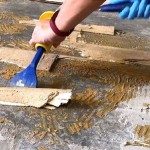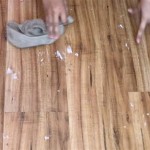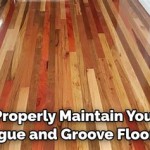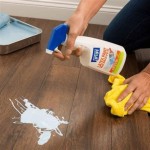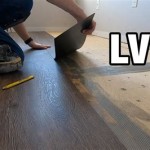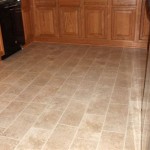How to Remove Underlay Glue from Wooden Floors
Underlay glue is a common adhesive used to secure underlayment to subfloors, particularly in areas where moisture and wood expansion are concerns. While underlay glue serves a crucial role in flooring installations, it can sometimes become a nuisance, leaving unsightly residue on wooden floors after removal or replacement of underlayment. Removing underlay glue from wooden floors can be a tedious task, but it is achievable with proper techniques and patience. This article will guide you through the process of removing underlay glue from wooden floors, providing practical tips and methods for achieving clean and flawless results.
Assessing the Glue and Choosing the Right Removal Method
Before embarking on glue removal, it is essential to assess the type of glue used and its condition. Understanding the glue's characteristics will help determine the most appropriate removal method. It is important to note that some underlay glues are specifically designed for easy removal, while others are more tenacious. Factors like the age of the glue, its thickness, and its bond with the wood can influence the removal process.
Here is a breakdown of common underlay glue types and their removal challenges:
- Water-based adhesives: These are generally easier to remove, as they soften with moisture. Techniques such as scraping, sanding, or applying a glue remover will often suffice.
- Solvent-based adhesives: These are usually more durable and require more aggressive removal methods. Using a solvent-based remover or a combination of scraping and sanding may be necessary.
- Epoxy glues: Epoxies are exceptionally strong and require specialized removers or mechanical methods. Care should be taken as these methods can potentially damage the underlying wood.
Effective Techniques for Glue Removal
Once you've determined the type of underlay glue and its characteristics, you can proceed with the appropriate removal method. Here are some tried-and-true techniques:
Scraping
Scraping is a common and effective method for removing underlay glue, particularly for loose or softened residue. Use a scraper with a sharp blade, such as a putty knife or a floor scraper. Apply gentle pressure while scraping in the direction of the wood grain. Avoid excessive pressure, as this could damage the wood surface.
Sanding
Sanding is an effective technique for removing stubborn glue residue. Using a medium-grit sandpaper, sand the affected area in the direction of the wood grain. Work gradually, applying light pressure. Progress to fine-grit sandpaper for finishing and smoothing out the surface.
Chemical Removers
For tenacious glue residues, chemical removers can be a valuable tool. Select a glue remover specifically designed for the type of glue you are removing. Always follow the manufacturer's instructions carefully regarding application, dwell time, and safety precautions. Apply the remover to a small, inconspicuous area first to test for compatibility with the wood finish. Allow the remover to penetrate the glue, then scrape off the softened residue. Repeat the process as needed.
Heat
Heat can sometimes soften glue residue, making it easier to remove. Use a heat gun or a hairdryer to gently heat the affected area. Be cautious as excessive heat could damage the wood surface or finish. Scrape the softened glue residue carefully, and repeat the heating and scraping process as needed.
Essential Tips for Removing Underlay Glue
Here are some additional tips to enhance the removal process:
- Protect Your Work Area: Cover surrounding surfaces and wear protective gear, such as gloves and eye protection, to prevent accidental contact with glue remover.
- Test Before Applying Removers: Always test a small, inconspicuous area of the wood surface first to ensure the chosen remover is compatible and won't damage the finish.
- Work in Small Sections: To manage the process efficiently, focus on small sections of the floor at a time.
- Clean Thoroughly: After removing the glue residue, clean the affected area with a damp cloth to remove any remaining remover or debris.
- Consider Professional Help: If you encounter stubborn glue residue or have concerns about damaging the wood, consider consulting a professional flooring specialist for assistance.

How To Remove Glue From Wood Floors Pete S

Flooring How Can I Remove Carpet Adhesive From Hardwood Floors Home Improvement Stack Exchange

How To Remove Glue From Wood Floors Pete S

Removing Glue Tar Paper From Hardwood Floors Farmhouse Restoration Day In The Life

4 Ways To Remove Adhesive From A Hardwood Floor Wikihow

Best Ways To Take Out Even Impossible Remove Glue From Floors

4 Ways To Remove Adhesive From A Hardwood Floor Wikihow

How And Not To Remove Carpet Padding From Hardwood Floors Accidentally Green

How To Remove Carpet Glue And Floor Adhesive View Our Tips

4 Ways To Remove Adhesive From A Hardwood Floor Wikihow
See Also
